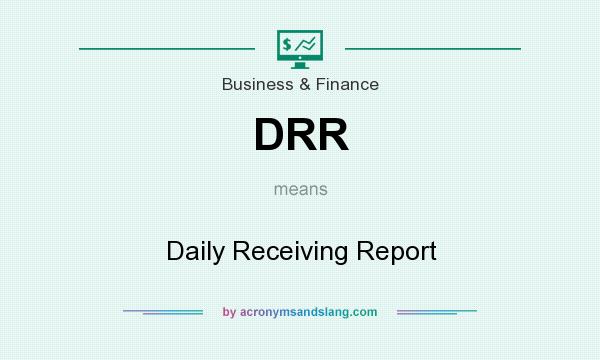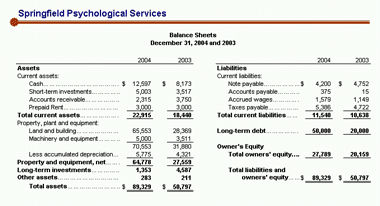Investors and lenders pay attention to the P&L statement, especially when comparing different periods to determine the long-term trajectory of the company. An income statement assesses the profit or loss of a business over a period of time. Guidelines for balance sheets of public business entities are given by the International Accounting Standards Board and numerous country-specific organizations/companies. The financial statement only captures the financial position of a company on a specific day.
The information found in a company’s balance sheet is among some of the most important for a business leader, regulator, or potential investor to understand. If this balance sheet were from a US company, it would adhere to Generally Accepted Accounting Principles (GAAP), and the order of accounts would be reversed (most liquid to least liquid). External auditors, on the other hand, might use a balance sheet to ensure a company is complying with any reporting laws it’s subject to.
Shareholder’s equity
As with most financial documents, complexity scales with your business. If someone is looking to acquire your business, they’ll request a balance sheet to help understand your financial position. A record of the assets will show the financial good health of the firm, what it is worth on paper to potential investors or banker when looking for credit. Here is a quick reference for the key differences between the balance sheet and income statement, summarizing what we’ve discussed above. The acid-test ratio adds further clarity to the current ratio by only considering easy-to-liquidate assets, providing a more accurate picture of a company’s ability to meet obligations. The balance sheet is also known as the statement of financial position.
For the liabilities side, the accounts are organized from short- to long-term borrowings and other obligations. Once you’ve set a date, your next task is to list out all of your current asset items in separate line items. To make this section more actionable, it’s best to separate them in order of liquidity. More liquid items like cash and accounts receivable go first, whereas illiquid assets like inventory will go last. After listing a current asset, you’ll then need to include your non-current (long-term) ones. For example, your local tax agency might randomly select your business for an audit.
Join 446,005 entrepreneurs who already have a head start.
It’s wise to have a buffer between your current assets and liabilities to cover your short-term financial obligations. A balance sheet explains the financial position of a company at a specific point in time. As opposed to an income statement which reports financial information over a period of time, a balance sheet is used to determine the health of a company on a specific day.
For federal income tax purposes, only C corporations are required to complete a balance sheet as part of their annual return. This balance sheet compares items at the beginning of the year with items at the end of the year. The IRS wants to see that the balance sheet included with Form 1120 agrees with the corporation’s books and records.
Understanding a Balance Sheet (With Examples and Video)
For example, if a company has assets of $100,000 and debts of $55,000, the debt ratio is 55% ($55,000 ÷ $100,000). The balance sheet and income statements complement one another in painting a clear picture of a company’s financial position and prospects, so they have similarities. The P&L statement is one of three key financial statements a business releases, either quarterly, annually or both if it’s a public company. It keeps track of profitability, income sources, expenses and budgets, allowing the company to take action against variances from projections.
- The income statement and balance sheet follow the same accounting cycle, with the balance sheet created right after the income statement.
- The result means that WMT had $1.84 of debt for every dollar of equity value.
- Likewise, its liabilities may include short-term obligations such as accounts payable and wages payable, or long-term liabilities such as bank loans and other debt obligations.
- For example, a positive change in plant, property, and equipment is equal to capital expenditure minus depreciation expense.
- These are the financial obligations a company owes to outside parties.
Based on this information, potential investors can decide whether it would be wise to invest in a company. Similarly, it’s possible to leverage the information in a balance sheet to calculate important metrics, such as liquidity, profitability, and debt-to-equity ratio. Of the four basic financial statements, the balance sheet is the only statement which applies to a single point in time of a business’s calendar year.
Three Components of a Balance Sheet
Internal or external accountants can also prepare and look over balance sheets. The most liquid of all assets, cash, appears on the first line of the balance sheet. Cash Equivalents are also lumped under this line item and include assets that have short-term maturities under three months or assets that the company can liquidate on short notice, such as marketable securities. Companies will generally disclose what equivalents it includes in the footnotes to the balance sheet.
For this reason, the balance sheet should be compared with those of previous periods. With Ramp on your team, it’s easier to create a balance sheet and close your books faster. Check out Ramp’s capabilities today, and enhance your company’s finances. Equity can also drop when an owner draws money out of the company to pay themself or when a corporation issues dividends to shareholders. Capitalization refers to the amount of debt compared to the equity that a company has on its balance sheet.
It is important to note that some ratios will need information from more than one financial statement, such as from the balance sheet and the income statement. A balance sheet shows the financial position of the business at a specific point in time. The balance sheet is the cornerstone of a company’s financial statements, providing a snapshot of its financial position at a certain point in time. This statement is a great way to analyze a company’s financial position. An analyst can generally use the balance sheet to calculate a lot of financial ratios that help determine how well a company is performing, how liquid or solvent a company is, and how efficient it is.
Companies typically use International Financial Reporting Standards (IFRS) when making Balance Sheets, which requires listing accounts in the opposite order, from least to most liquid. A bank statement is often used by parties outside of a company to gauge the company’s health. Balance sheets allow the user to get an at-a-glance view of the assets and liabilities of the company. In this example, Apple’s total assets of $323.8 billion is segregated towards the top of the report.
Compare total assets against liability and equity.
Because you need to use balance sheets for these calculations, showing you know these metrics and formulas implies an inherent knowledge. A company’s current and non-current liabilities are listed on the balance sheet. The following balance sheet is a very brief example prepared in accordance with IFRS. It does not show all possible kinds of assets, liabilities and equity, but it shows the most usual ones. Monetary values are not shown, summary (subtotal) rows are missing as well.
Companies may also choose to prepare balance sheets on a monthly basis, in which case they would report on the last day of each month. In simple terms, owner’s or shareholder’s equity is equal to the total assets attributable to owners or shareholders in the event of the company’s liquidation, after paying all debts or liabilities. The balance sheet is a very important financial statement for many reasons. It can be looked at on its own and in conjunction with other statements like the income statement and cash flow statement to get a full picture of a company’s health. Balance sheets give a quick overview of a company’s financial standing.
Does Budweiser Brewing Company APAC (HKG:1876) Have A Healthy Balance Sheet? – Simply Wall St
Does Budweiser Brewing Company APAC (HKG: Have A Healthy Balance Sheet?.
Posted: Mon, 21 Aug 2023 00:10:41 GMT [source]
Companies usually prepare one at the end of a reporting period, such as a month, quarter, or year. Accountants can use any of the above-described ratios with the information contained on balance sheets. Using that information, an accountant can analyze a company’s financial health more deeply.




